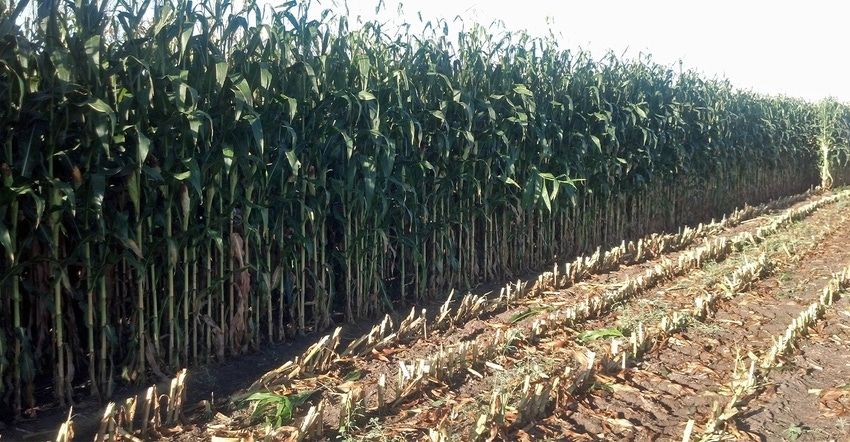December 17, 2019

The Agricultural Revenue Coverage-Individual Coverage (ARC-IC) program received little interest under the previous farm bill, but in certain instances the ARC-IC may be the best option this year, says Andrew Swenson, North Dakota State University Extension farm management specialist.
“Producers should be able to determine whether an ARC-IC election will provide benefits from the 2019 crop year before the March 15 signup date,” he says. “ARC-IC uses yields from the enrolled farm, which should be known, in its calculations.”
Producers had several reasons for dismissing ARC-IC from consideration under the previous farm bill.
“It is more complicated and requires more annual paperwork,” Swenson says. “It requires the enrollment of the entire Farm Service Agency (FSA) farm, thereby losing the flexibility of choosing between ARC-County (ARC-CO) and Price Loss Coverage (PLC) on a crop-by-crop basis within the FSA farm. Also, it only pays on 65% of base acres instead of 85%, but there is more to this story.”
Also, because the ARC-IC payment rate is determined by a weighted average of all covered commodities grown on the enrolled farm or farms, it may be less likely to trigger a payment because strong revenue of some crops may offset weak revenue of other crops.
““Producers should be cautious about enrolling more than one FSA farm in ARC-IC because crop plantings on all enrolled farms, within a state, are combined to determine the per-acre payment rate,” Swenson says.
ARC-IC benefits
The most unique aspect of ARC-IC is that it is the only program option not decoupled from production; the payment calculation uses the producer’s yields from the covered commodities grown on the farm.
The per-acre payment rate is determined by the revenue guarantee and actual revenue using the farm’s yield history and current yield, respectively, of the covered commodities planted.
ARC-CO uses county yields of crops for which the farm has base acres, regardless of what actually is planted on the farm. All three programs — ARC-CO, ARC-IC and PLC — rely on national average marketing year prices in payment calculations.
If ARC-IC generates a per-acre payment rate, it is applied to 65% of the total base acres of the farm. The crops for which the farm has base acres, for example corn, wheat and soybeans, is irrelevant with ARC-IC. It only considers the total base of the farm.
At least 1 acre of a covered commodity must be planted to be eligible for payment, with one exception. If the farm has zero plantings of covered commodities and has prevented planting of covered commodities, the farm would receive the maximum payment rate, 10% of benchmark revenue. Conversely, all prevented planting acreage is excluded from ARC-IC calculations if any covered commodities were planted on the FSA farm.
ARC-IC payments are made on 65% of all of the farm’s base acres, whereas ARC-CO and PLC payments are made on 85% of base acres for an individual crop base. In certain instances, this can be an advantage, according to Swenson.
For example, assume a farm has 1,000 base acres consisting of 300 acres of corn, 300 acres of wheat and 400 acres of soybeans. If only wheat triggers an ARC-CO payment, it will be made on 255 acres (300 times 85%) of base. However, if ARC-IC triggers a payment, it is made on 650 acres (1,000 times 65%). The probability and amount of the payment rate must be considered.
5 fits
Five instances where ARC-IC may be the best option are:
1. If weather circumstances prohibited all plantings of covered commodities on the FSA farm, and everything was prevent-planted. A maximum ARC-IC payment would be determined on the combination of crops that were prevented planting. If one or more acres of covered commodities are grown, all prevented plant acres are ignored in ARC-IC calculations.
2. If a general yield shortfall occurred on an FSA farm in 2019. Low yields in 2019 should not reduce the possibility of payments for 2020 because benchmark revenue computation for 2020 will use yields from 2014 to 2018.
3. If most of a farm’s base acres are for crops, such as soybeans, which are unlikely to trigger payments under the ARC-CO or PLC options in 2019.
4. If the farm is generally less productive than the county average. Yields from 2013 to 2017 are used in determining the revenue guarantee. For each year the farm did not grow the crop, 100% of the trend-adjusted county yield is used. This could provide a stronger revenue guarantee relative to the farm’s typical yields. For years the crop was grown, the higher of actual farm yield and 80% of the county T-yield is used.
5. If a farm that has high historic yields but significant yield variability. ARC-IC could provide additional protection, beyond crop insurance, for a poor production year on the farm.
Disadvantages
“The concern with enrolling in ARC-IC is that you forgo any potential payments that could be received from enrollment in ARC-CO or PLC,” Swenson says. “For example, it probably should not be considered if a farm has substantial base acres of canola or wheat, which currently project strong payments under PLC.
A decision aid to evaluate ARC-IC is available online.
Source: NDSU, which is solely responsible for the information provided and is wholly owned by the source. Informa Business Media and all its subsidiaries are not responsible for any of the content contained in this information asset.
You May Also Like




